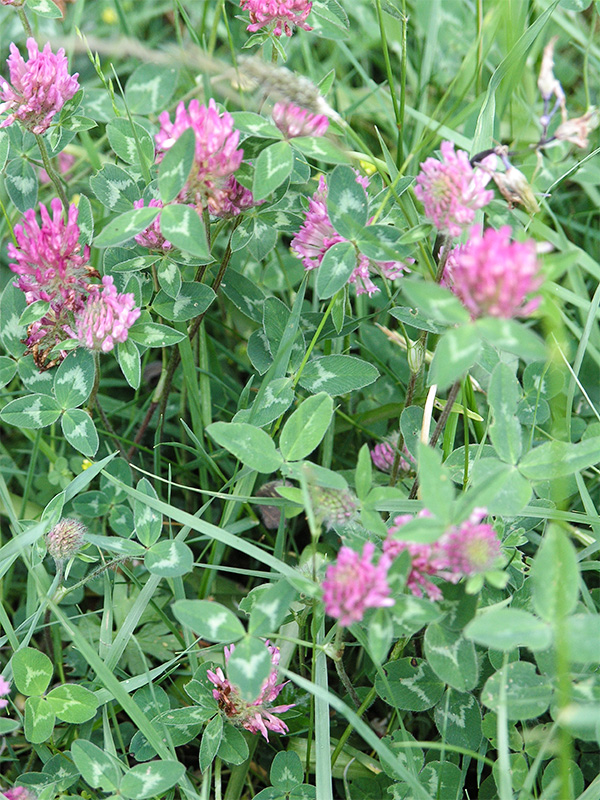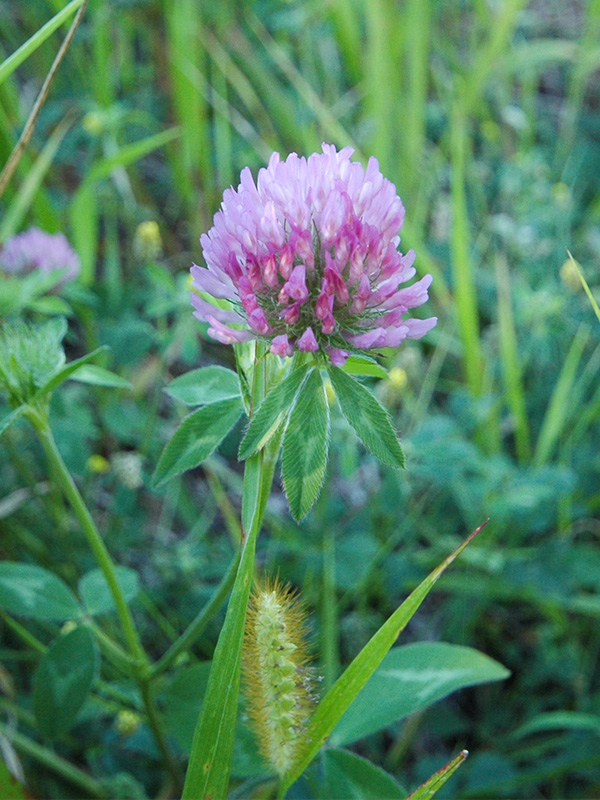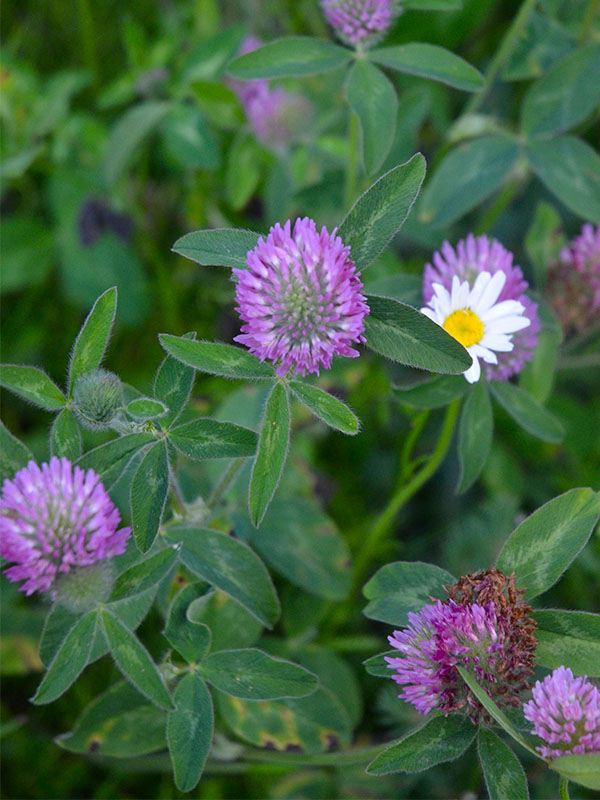
Perennials, Weeds > Trifolium > Trifolium pratense > Trifolium pratense
Trifolium pratense
Red Clover
Origin: Native to Europe, Western Asia, Northwest Africa and North America.
| Family |
| Fabaceae |
| Genus |
| Trifolium |
| Species |
| pratense |
| Category |
| Perennials, Weeds |
| RHS Hardiness Zone |
| H7 |
| Height |
| 20 - 80 cm |
Photographs
Description and Growing Information
Flowering Period
| Landscape |
| Forest margins, field borders, paths and widely planted as pasture. |
| Cultivation |
| Will grow in a wide range of soil and environmental conditions but not excessively wet, acid or shallow soils. |
| Growth |
| Fast |
| Pests |
| Roundworms are a problem. Subject to red clover rust. |
| Habitat |
| Wet/dry grassland and woodland. |
| Leaf Description |
| Alternate, trifoliate (3 leaflets). Each leaflet is 15 - 30 mm long, 8 - 15 mm wide and has a pale crescent in the outer half. 2 basal stipules that are narrow to a bristle-like point. |
| Flower Description |
| Flowers are 12 - 15 mm long and produce a dense inflorescence. |
| Colour Description |
| Each leaflet is green. The inflorescence is dark pink in colour. |
| Notable Specimens |
| The A.M. Cuddy Gardens, Strathroy, Ontario, Canada. Banff, Alberta, Canada. |
| Ethnobotanical Uses (Disclaimer) |
| Red clover is commonly used to make a herbal tea that is sweet-tasting. Used in traditional medicine in India as deobstruent, antispasmodic, expectorant, sedative, anti-inflammatory and antidermatosis agent. Alternatively, red clover is promoted as a treatment for symptoms of menopause, coughs, disorders of the lymphatic system and a variety of cancers. |




